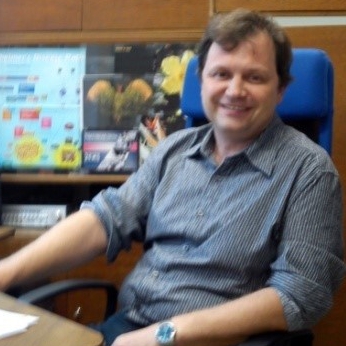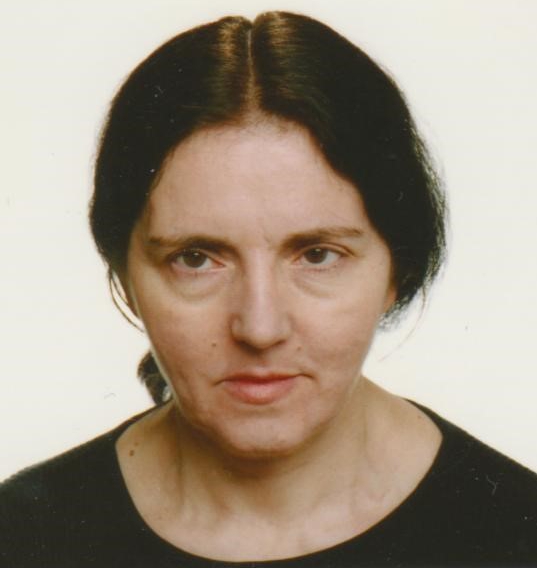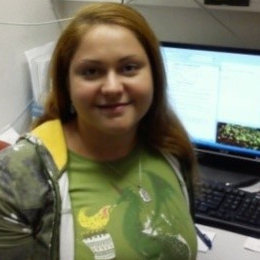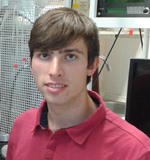
Recording of electrophysiological activity from dorsal horn neurons in acute spinal cord slices with patch-clamp technique.
The main research interest of our Laboratory is to study mechanisms of pain and to explore new possibilities of pain treatment, especially in chronic states. Our experimental work is concentrated on the modulation of nociceptive information at the spinal cord level that is the relay center between the periphery and the higher brain areas. Our goal is to study these modulatory mechanisms in order to improve therapy for pain conditions, such as allodynia, hyperalgesia, neuropathic and cancer related pain. Our focus is on the role of TRPV1, purinergic P2X receptors and inflammatory cytokines. In our research we use mainly electrophysiological, optogenetic, immunohistochemical and behavioral methods.
The group of Cellular and Molecular Neuroendocrinology headed by Dr. Zemková also investigates the relationship between structure and function of P2X receptor-channels and their involved in electrical activity, calcium signaling, and release of hormones and neurotransmitters in neuroendocrine cells.
Publications of the group of Cellular and Molecular Neuroendocrinology (2008 - 2019)
Projects
RNDr. Hana Zemková, CSc. is the guest editor in special issue "Purinergic P2 Receptors 2.0" of International Journal of Molecular Sciences.
More
Scientists from the Department of Functional Morphology in collaboration with colleagues from The University of Texas showed that paclitaxel induced pain is mediated by TRPV1 and TLR4 receptors.
More
N-acylphosphatidylethanolamine (NAPE), as the precursor of anandamide, an endogenous agonist of TRPV1 and cannabinoid receptors, could play a role in modulation of nociceptive signalization in the spinal cord.
More
Modulation of nociceptive synaptic transmission in the spinal cord is implicated in the development and maintenance of several pathological pain states. The chemokine CCL2 (C-C motif ligand 2) was shown to be an important factor in the development of neuropathic pain after peripheral nerve injury, when it may be released from the central endings of primary nociceptive neurons in the spinal cord dorsal horn.
More
Modulation of synaptic transmission in the spinal cord dorsal horn plays a key role in the development of pathological pain states. Protease-activated receptors (PARs) belong to a family of four G-protein-coupled receptors (PAR1-4) activated by proteases. Proteases and PARs occur in many tissues like intestine, lungs, kidneys, endothelium, and mast cell and in the central and peripheral nervous systems. Proteases and PARs are involved in neuronal and astrocyte survival, proliferation and morphology, release of neurotransmitters, and also modulate the function and activity of ion channels.
More
Show more
Achievements
Altogether 70 scientists from 17 foreign countries and 6 from the Czech Republic have attended the meeting as registered participants.
More
Aktualne.TV - interview, 18.3. 2015
The interview with Dr. Paleček about the research whose aim is to eliminate chronic pain.
More
Ivermectin is a large lipophilic molecule that acts as a positive allosteric regulator of several ligand-gated channels including the glutamate-gated chloride channel, gamma aminobutyric acid type-A receptor, glycine receptor, neuronal alpha7-nicotinic receptor and purinergic P2X4 receptor. This review summarizes what is currently known about ivermectin binding and modulation of Cys-loop receptor family of ligand-gated ion channels and what are the critical structural determinants underlying potentiation of the P2X4 receptor channel.
More
Allosteric modulators of ligand-gated receptor channels induce conformational changes of the entire protein that alter potencies and efficacies for orthosteric ligands, expressed as the half maximal effective concentration and maximum current amplitude, respectively. The influence of allostery on channel pore size, an issue not previously addressed, was studied.
More
Corticotorpin releasing hormone (CRH), a key regulator of HPA axis, is secreted by hypothalamic paraventricular neurons into the hypophysial portal system and stimulates ACTH secretion in pituitary corticotorphs. The data show that resting membrane potential in corticotrophs depends on background voltage-insensitive sodium conductance, and that CRH has biphasic actions: a depolarizing effect driven by a cationic conductance at basal concentrations in pituitary portal circulation and an inhibitory effect at higher stress CRH concentrations
More
Show more
Publications
Zemková; Hana
.
Special Issue of International Journal of Molecular Sciences (IJMS) "Purinergic P2 Receptors: Structure and Function"
.
International Journal of Molecular Sciences. 2021; 22(1)); 383
.
IF = 4.556
[ASEP]
[
doi
]
Mrózková; Petra - Špicarová; Diana - Paleček; Jiří
.
Spinal PAR2 Activation Contributes to Hypersensitivity Induced by Peripheral Inflammation in Rats
.
International Journal of Molecular Sciences. 2021; 22(3)); 991
.
IF = 4.556
[ASEP]
[
doi
]
Míková; H. - Kuchtiak; Viktor - Svobodová; Irena - Spišská; V. - Pačesová; D. - Balík; Aleš - Bendová; Z.
Circadian Regulation of GluA2 mRNA Processing in the Rat Suprachiasmatic Nucleus and Other Brain Structures
.
Molecular Neurobiology. 2021; 58(1); 439-449
.
IF = 4.500
[ASEP]
[
doi
]
Sivčev; Sonja - Slavíková; Barbora - Ivetic; Milorad - Knězů; Michal - Kudová; Eva - Zemková; Hana
.
Lithocholic acid inhibits P2X2 and potentiates P2X4 receptor channel gating
.
Journal of Steroid Biochemistry and Molecular Biology. 2020; 202(Sep)); 105725
.
IF = 3.813
[ASEP]
[
doi
]
Rupert; Marian - Bhattacharya; Anirban - Stillerová Tvrdoňová; Vendula - Jindřichová; Marie - Mokdad; Audrey - Boué-Grabot; E. - Zemková; Hana
.
Role of Conserved Residues and F322 in the Extracellular Vestibule of the Rat P2X7 Receptor in Its Expression; Function and Dye Uptake Ability
.
International Journal of Molecular Sciences. 2020; 21(22)); 8446
.
IF = 4.556
[ASEP]
[
doi
]
Show more











